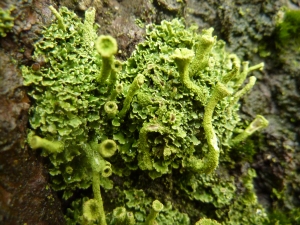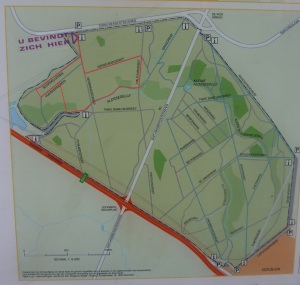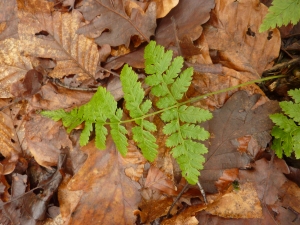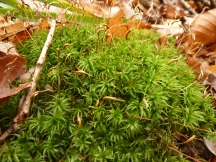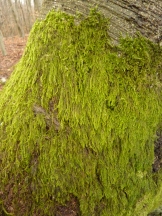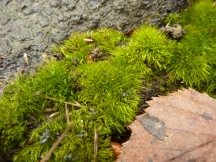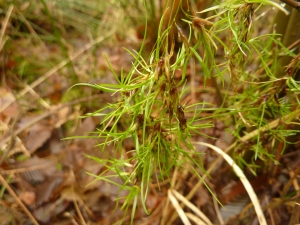Today it is grey in Brussels, very grey….the perfect weather for a tour in the Forêt de Soignes. I know what you’re all thinking : a walk in the forest in winter? Cold, wet and nothing to see!
I agree for the first and second comment, not for the latter! Although it’s not as colourful and living as in spring, winter stills offers a lot to see, for who wants to! 😉
A small map (in red : the tour I did, which wasn’t very long!)
The Sonian Forest, which lies at the South-East of Brussels, spans over 4000 ha, the main trees being beech and oaks. It has been heavily planted in the 18th century, and is now called the “Cathedral beech grove” because of the height of the beech trunks.
Winter has been pretty “hot” for now, brambles are flourishing.
But there is plenty of flora & fauna to discover, even in January! Starting with ferns, like this Dryopteris :
a lot of mosses : probably Atrichum undulatum, Hypnum andoi (which grows downwards) and Grimmia pulvinata
a few plants : Oxalis acetosella (the common wood sorrel), which is going to produce delicate white flowers in April. Easy to spot with its three-parted leaves, it bears a resemblance but is botanically far from the common clover (genus Trifolium).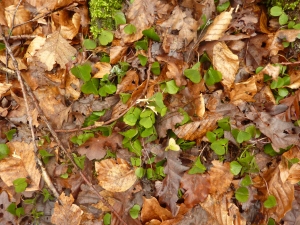
Mysterious twisted salad-like leaves… belonging to Arum maculatum (also called “Lords and Ladies, Devils and Angels, Cows and Bulls, Cuckoo-Pint, Adam and Eve, Bobbins, Naked Boys, Starch-Root and Wake Robin.”). WOW, English sure are poetic people!
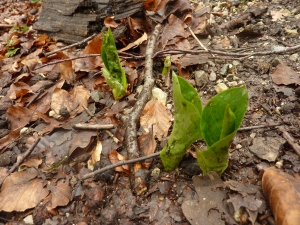
Cardamine flexuosa (the Wavy Bittercress), loving damp places. It was already flowering here, in a little mud puddle. This particular bittercress has hairy stems.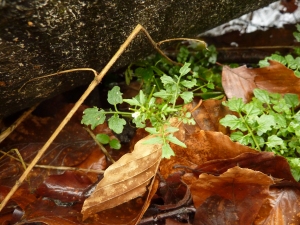
This bizarre plant, which is probably an Agrostis or another grass genus, showing a very peculiar growth form (quite common in grasses though) called pseudovivipary. A bit of biology (but not much, don’t worry 😉 ) : it is a form of asexual reproduction as the grass develop mature plantlets at the place of flowers. It might be caused by environmental factors or fungi.
Speaking of fungi… An interesting yellow one to begin with, Tremella mesenterica (the golden jelly fungus, you can see why). It is a parasite of other fungi, and grows on dead wood. Tremella contains a lot of active compounds, with various effects : immunostimulating, antidiabetic, anti-inflammatory, hypocholesterolemic, antiallergic..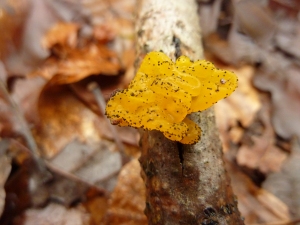
Xylaria hypoxylon, also growing on dead wood. It is known as the candlestick fungus, or stag’s horn fungus because of its weird fruiting bodies (called ascocarps). Apparently it has been studied for its active compounds in cancer research.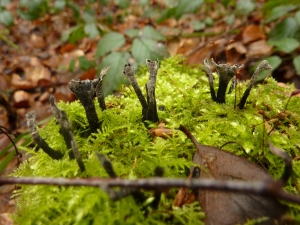
And a bizarre lichen to end this walk, called Cladonia fimbriata. This lichen forms little stalks shaped like golf tees, and usually grows on live tree bark.